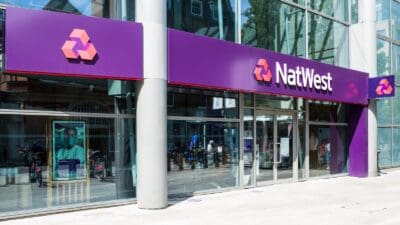Everything’s relative, so while my Lloyds (LSE: LLOY) shares put on a solid show last year, I couldn’t help but feel a twinge of disappointment. FTSE rivals Barclays (LSE: BARC) and NatWest did an awful lot better, doubling in value.
Barclays’ impressive surge following a strategic overhaul which included cutting £2bn of costs to boost shareholder payouts by £10bn within three years. Snapping up Tesco Bank further boosted its domestic retail banking presence.
At the same time, Lloyds got bogged down in the motor finance mis-selling scandal. This, according to some estimates, could cost it £3bn in compensation.
Should you invest £1,000 in Barclays right now?
When investing expert Mark Rogers has a stock tip, it can pay to listen. After all, the flagship Motley Fool Share Advisor newsletter he has run for nearly a decade has provided thousands of paying members with top stock recommendations from the UK and US markets. And right now, Mark thinks there are 6 standout stocks that investors should consider buying. Want to see if Barclays made the list?
So it goes. Investing’s a long-term game, and I can’t expect my stock picks to be top dog every year.
Can these FTSE 100 stocks soar in 2025 too?
Despite Barclays’ remarkable performance, I chose not to chase past performance. And I remained loyal to Lloyds, anticipating a catch-up this year.
I decided the motor scandal was priced in, and may not be as bad as we all fear. While February’s £1.7bn share buyback showed Lloyds was good for it, boosting confidence.
My faith has been rewarded, so far. Over the past three months, Lloyds’ share price has risen by 36%, outperforming Barclays, which grew 18%. An investment of £10,000 in Lloyds three months ago would now be worth £13,600, whereas the same sum in Barclays would be £11,800. That’s a difference of £1,800. GoThe Black Horse Bank!
Lloyds still has lost ground to recover though. Its shares are up 40% over the last year and and 60% over two. Barclays has surged 70% and 130% over the same periods.
Barclays’ diversified operations, including a significant presence in the US, have contributed to its robust performance. However, the US economy faces potential and financial uncertainties under Donald Trump.
Lloyds is almost exclusively exposed to the UK economy, which has its own set of challenges as growth slows, inflation proves sticky and trade wars threaten. Higher interest rates could protect net interest margins all round though.
One’s cheaper, the other yields more
For income seekers, Lloyds has a trailing yield of 4.3%, forecast to hit 5.5% this year. Barclays’ yield is lower at 2.75%, and expected to hit 3%. Over time, Lloyds’ higher dividends may shrink the performance gap.
Both banks anticipate improved operating margins. Lloyds’ margins are forecasted to jump from 17.4% to 40.7%, while Barclays’ are expected to increase from 30.3% to 38.3%.
Brokers are more optimistic about the outlook for Barclays’ shares, forecasting they’ll lift 17% over the next 12 months to around 359p, with Lloyds projected to increase a more modest 4.5% to 76.7p. While forecasts aren’t guarantees, that’s an interesting insight into market expectations.
Despite its weaker showing, Lloyds is more expensive with a price-to-earnings ratio of 11.6, higher than Barclays at 8.56. The price-to-book (P/B) ratio for Lloyds is 1.0, indicating fair value, while Barclays appears undervalued with a P/B ratio of 0.6.
I may have backed the wrong horse here, but I won’t be switching. It’s like jumping queues at the supermarket, it almost never works out as you hope.
An investor comparing these two stocks today faces a tough choice. On balance, I’d favour Barclays, but the easiest move is to split the difference and consider buying both.








